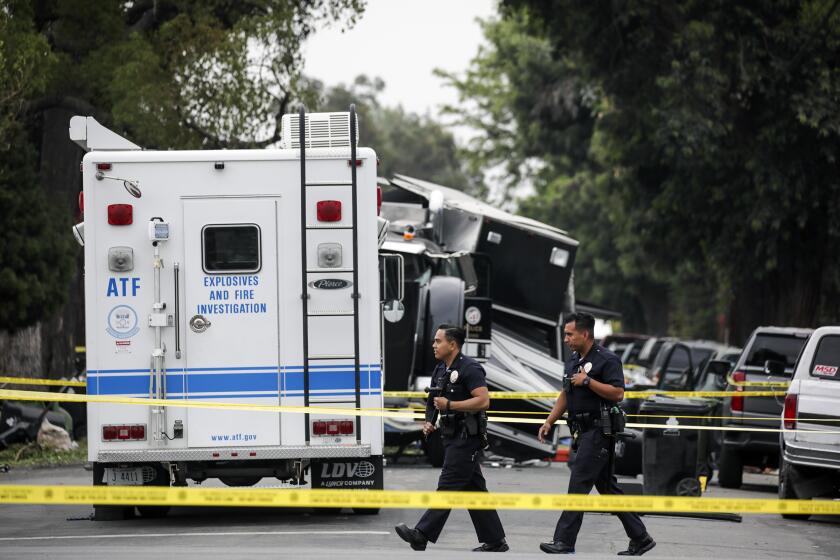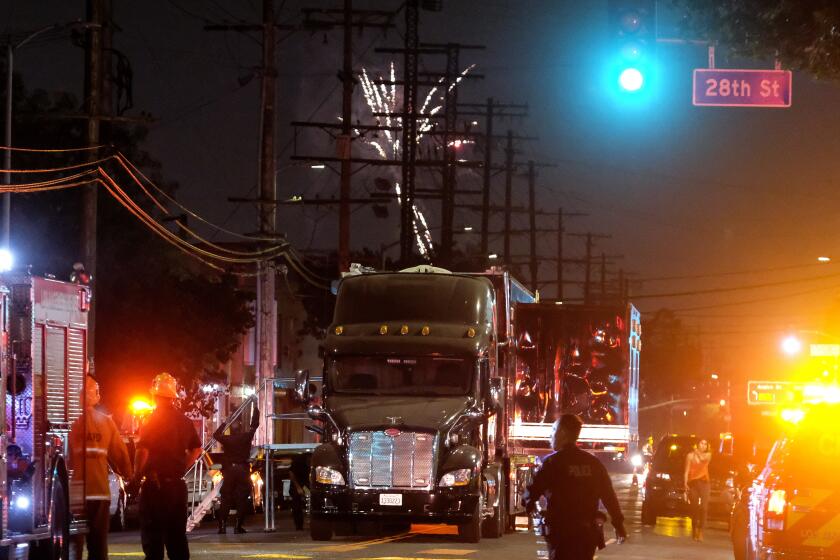Column: The fireworks blast that rocked 27th Street still echoes, as residents try to move on

- Share via
Mario Delgado strolled up Stanford Avenue a few days ago, pulling a wagon loaded with a cargo of milk and juice for his family, which is still recovering from the massive explosion of illegal fireworks that rocked his block June 30 when a police maneuver went horribly awry.
The beverages were donated by a friend, which is not uncommon in this densely populated neighborhood. Rents are high, wages are low, and people help each other out when they can.
Delgado was out front and kept his feet during the startling explosion. But his wife and 7-year-old son, who were inside the house, were both knocked off their chairs and suffered scratches. They’re still not sleeping well, he said. And Delgado, a high-rise window washer, doesn’t trust himself to return to work just yet.
“I can’t concentrate,” he said, telling me that he’s burning vacation time, and he gets only two weeks a year after 13 years on the job.
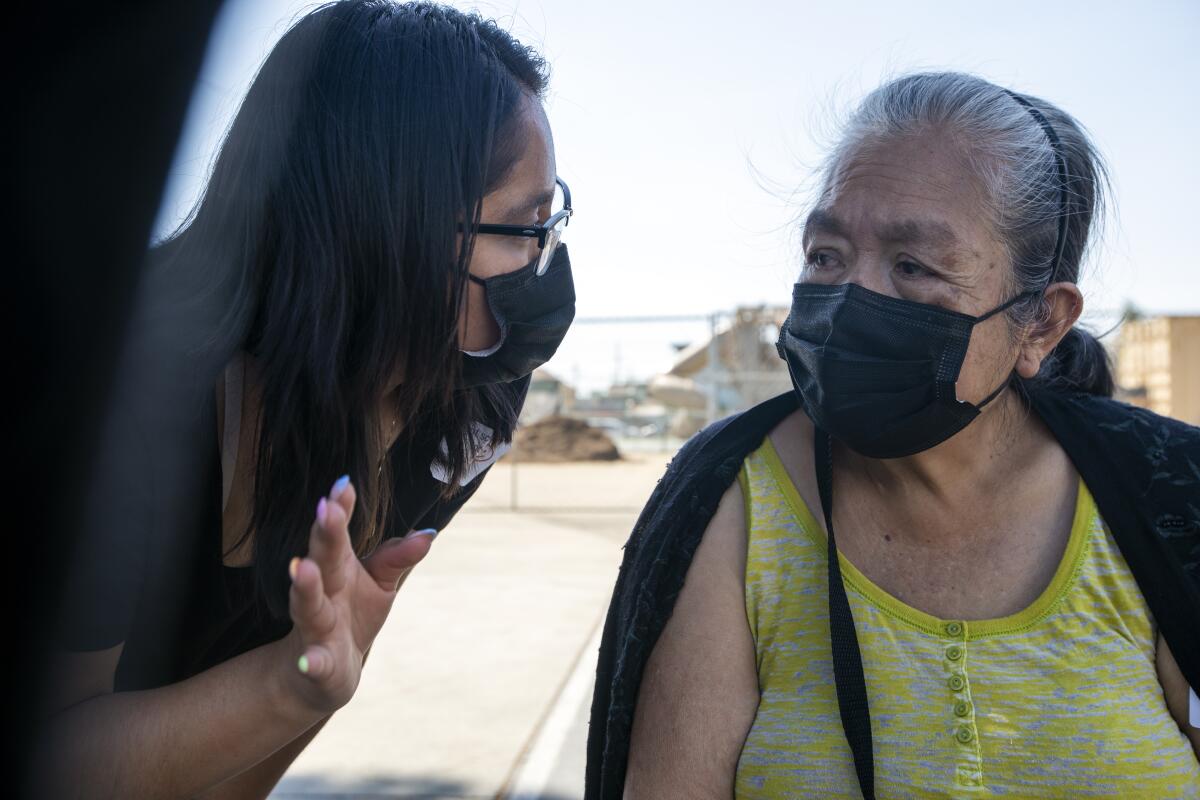
This is the kind of story you hear on East 27th Street, a block above Adams Boulevard, which is home to primarily working-class Latinos. Extended, multigenerational families live together in tight spaces. It’s the population that was forced to work through the pandemic at essential, low-wage jobs, and was hard-hit by the coronavirus. Many immigrant residents still speak Indigenous languages, such as Nawat, spoken in their countries of origin before the Spanish conquest.
And many people are still wondering what went wrong, even as displaced families began returning Thursday to the street where multiple homes and vehicles were damaged. Seventeen people, including residents and law enforcement officers, were injured, and searing images remain of bloodied victims being wheeled away.
I met Maria Emma Mendoza, whose daughter Mariana works as a UPS package sorter and also as a caretaker. Mariana brought her mother to a mobile medical clinic to get her hearing checked, because it was already bad before the blast. Maria Emma Mendoza, who caught the coronavirus last year, got a hug from her grandson as she waited for medical attention at a mobile medical unit set up at a rec center.
How did the LAPD manage to blow up a South L.A. block while seizing fireworks?
At the same location I met Manuel Tepas, a janitor, who was at home a block from the blast when debris and glass ripped through his window and into the house. “My ears still have a burning pain,” Tepas said as he filled out a form before seeing a doctor. He said he just started his job and has no health insurance.
A woman named Magdalena, who asked me not to use her last name, lives on 27th Street and cares for a developmentally disabled daughter. She said her youngster “cried, screamed and ran” when the house shook, and the girl still hasn’t recovered.
Three of Magdalena’s windows shattered, and she saw the lid of the detonation bin soaring overhead like a flying saucer. She feared it would hit power lines as it flew three blocks east, slamming into a garage.
Residents told me they were told prior to the explosion that they should remain indoors, but they were not told to evacuate. So they didn’t prepare themselves for what happened, and they wondered how police miscalculated so badly.
“When I was at UCLA,” said high school teacher Ron Gochez, who heard the blast from his home three blocks away, “they never would have done this in the middle of Westwood.
“I guess here it’s just South Central and it’s a lot of poor folks and the mentality was a little different,” said Gochez, vice president of the South Central Neighborhood Council. “But I just don’t see any type of scenario where the best idea is to detonate explosives in the middle of a residential community.”

An LAPD spokesman told me there is no update on the ongoing investigation, which is being handled by the federal Bureau of Alcohol, Tobacco, Firearms and Explosives. All we know is that police discovered thousands of pounds of fireworks at the East 27th Street residence of Arturo Cejas, who was later arrested.
Some of the fireworks were carted away, but some were deemed too unstable to transport, so the LAPD bomb squad loaded them into an iron-lined detonation chamber of a semi-truck.
And BOOM!
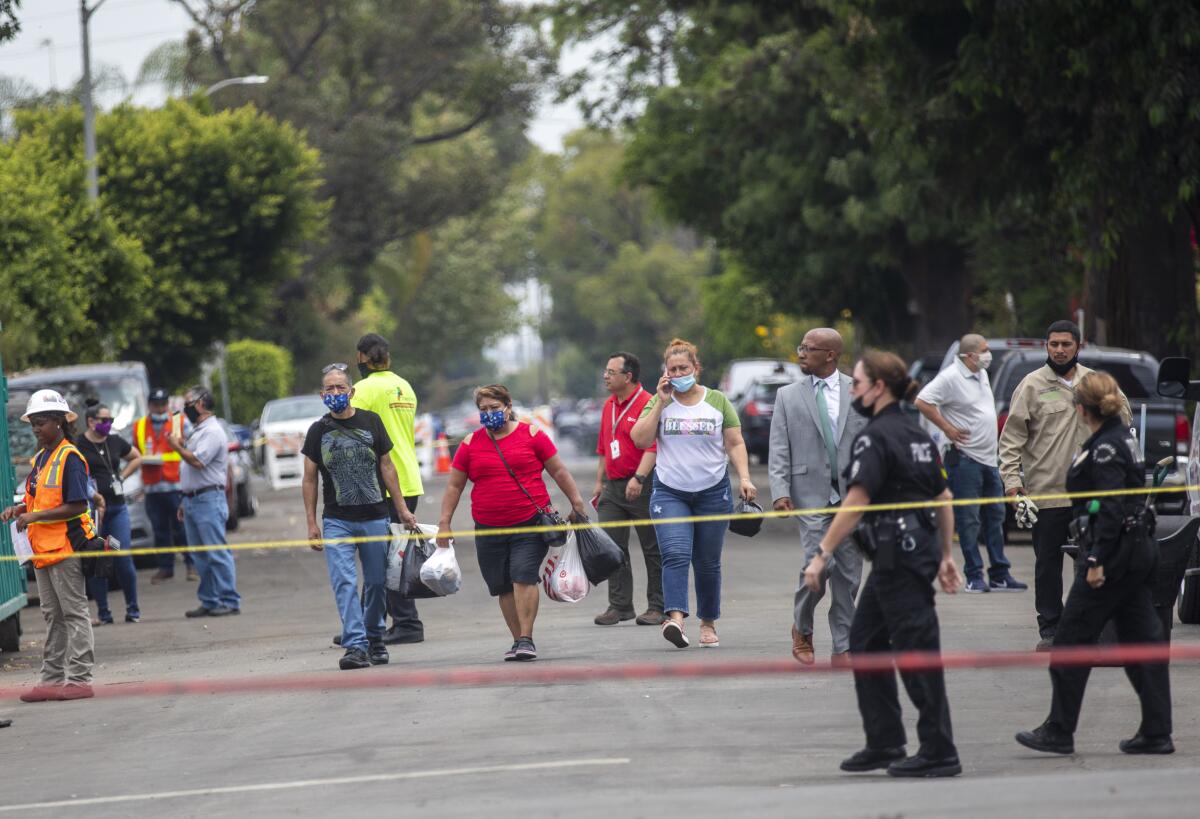
We all knew the annual obsession with amateur Fourth of July pyrotechnics is dangerous and potentially deadly, but we wouldn’t have guessed that the police would pose the biggest risk to public safety.
“The guy who had all the fireworks has been arrested and is facing the law,” Gochez said. “We think the people who made this decision and placed the lives of literally thousands of people at risk should also face consequences. It’s not just irresponsible. It’s not just like a ‘whoops.’ To me, it’s criminal negligence.”
James Westbrooks, deputy chief of staff to Councilman Curren Price, was on the street meeting with neighbors to see what assistance they needed.
“Our office was not informed,” he said of the destructive fireworks detonation, noting that his boss has demanded an accounting from LAPD brass as to what went wrong.
Crystal Gonzalez, who heads American Friends Service Community programs and oversees the public garden in the neighborhood, has been checking on residents who are still reeling. She said a woman of about 50 was picked up and tossed by the concussive power of the blast and injured her abdomen. Gonzalez took her to a doctor who recommended an emergency room visit, but the woman decided to wait and see if she gets better.
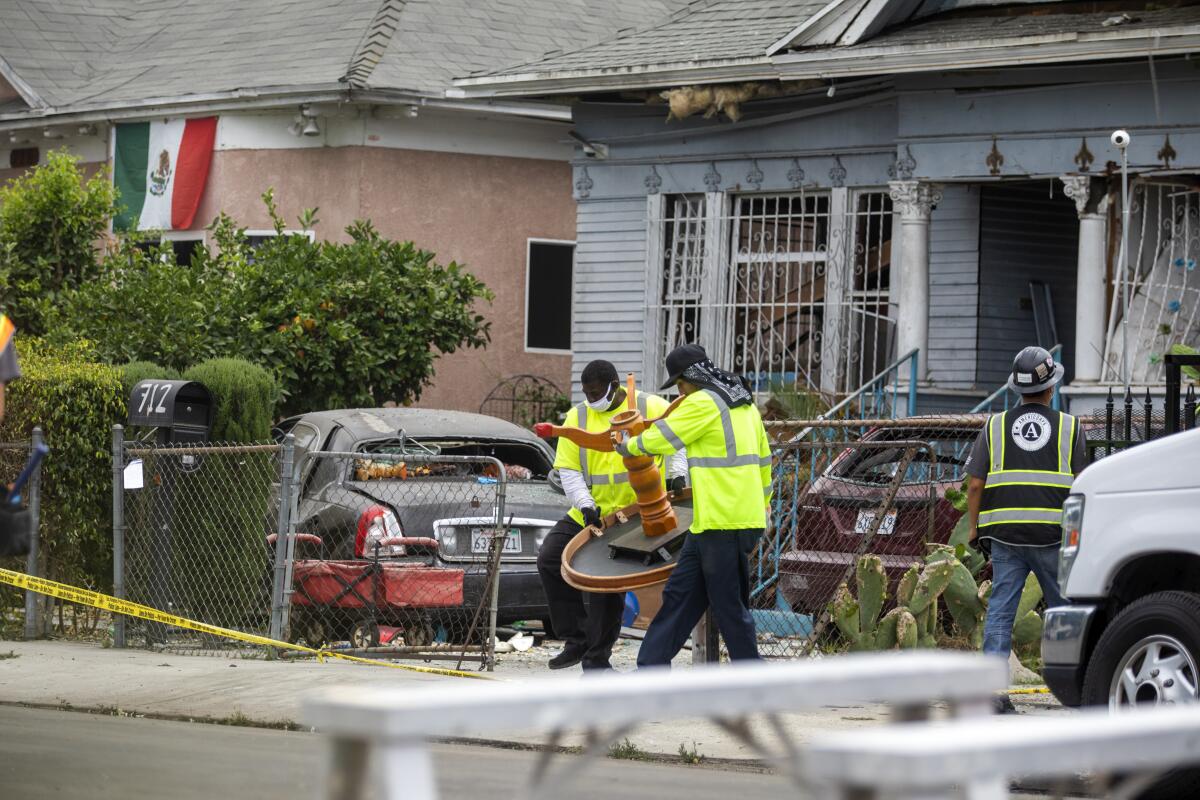
“People are saying it was like a supernatural power that had thrown them,” Gonzalez said. “This woman was at her computer table and said she keeps thinking it’s going to happen again. She feels unsafe and said she doesn’t want to go outside, doesn’t want to go down the street. Right now, she’s having nightmares.”
Gonzalez said the woman’s husband works in the garment industry, so they’re living precariously and face eviction because the house they’re renting is up for sale. That’s not an atypical story, said Gonzalez, who has worked in the neighborhood for a decade and has a deep affection for the residents.
“The main challenges in the neighborhood are economic,” Gonzalez said, and those who are undocumented are easily exploited by profiteers. “People are severely underpaid, and most of the people I know work in the garment industry and get paid below minimum wage. … Because of that, they live in really crowded housing, poor housing, and there’s a housing crisis from wave after wave of evictions.”
Explosion damages homes and injures 17 people as a bomb squad tries to safely detonate homemade fireworks seized from a home.
After more than a year of national conversations about police relationships with poor, minority communities, Gonzalez said she feared the accidental explosion will only heighten tensions. But she holds out hope that the response by the city will include more investment in community development and opportunity.
Window washer Mario Delgado, Gonzalez said, is typical of the volunteer, help-your-neighbor spirit of the neighborhood. He is lead coordinator of the South L.A. Farm run by American Friends, where 22 families grow food on 11-by-4-foot plots.
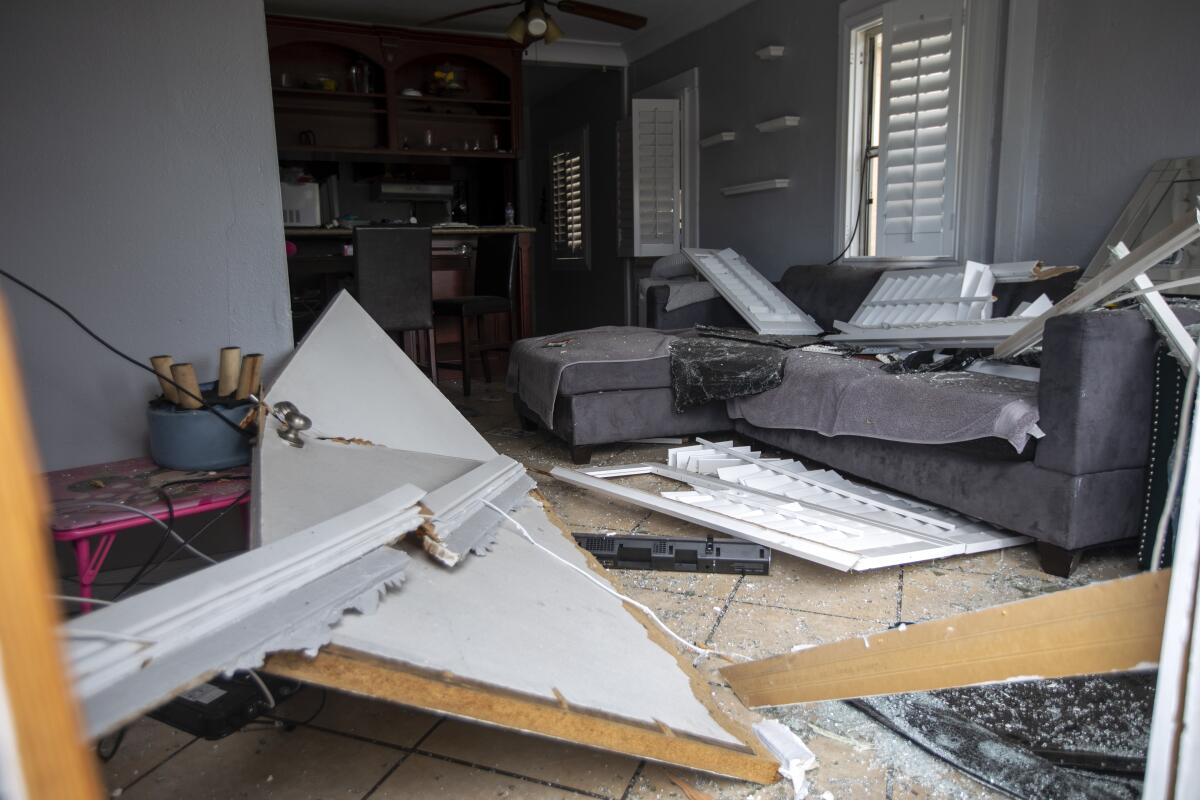
On his own plot, Delgado is now growing cabbage and a Mexican herb called papalo, which is similar to cilantro and does well in the extreme heat of Los Angeles. Others grow corn, squash and beans. A woman recovering from cancer was told by her doctor to eat organic, which she can’t afford or easily access, so the neighborhood farm is her salvation.
The crops are shared, Gonzalez said. People look after each other.
They are familiar with all manner of hardship, including the recent colossal mishap on their block, but they endure.
More to Read
Sign up for Essential California
The most important California stories and recommendations in your inbox every morning.
You may occasionally receive promotional content from the Los Angeles Times.

